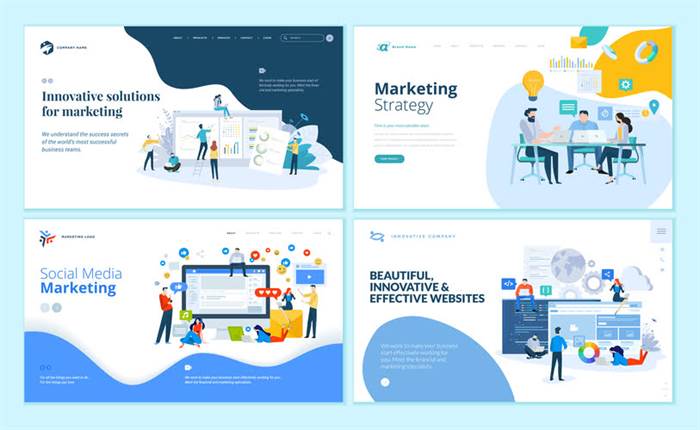Just recently, we published an article about vendors that genuinely have a hybrid integration platform. There too, we emphasized that most hybrid integration platforms are simply just integration platforms containing https://www.globalcloudteam.com/ all the tools that enable integration developers to create all the functionalities mentioned in the paragraph above. Mule as an ESB and CloudHub are strong platforms that provide exactly what businesses need.
To be future proof, enterprises should look for a HIP that is capable of handling data at rest and in transit, in the cloud and on-premises. The main decision you need to make is whether you purchase a tool and you design all the connections by yourself or if you’d outsource the work completely to a vendor that provides managed integration services. You need to have timely data, e.g., batch processes are not sufficient enough; you need to ensure that you receive all the information in real-time.
Follow IBM Cloud
As mentioned, the scope of hybrid integration is constantly expanding. It should not only be about cross-platform applications but the people who use them (not just IT anymore!), types of integration (not just applications anymore!), mobile and IoT devices, and operating models like embedded and multi-cloud. Complete integration platforms combine all the capabilities you need into a unified, containerized platform. They can also make it easier to bridge the gap between multiple styles of integration.

For more insight into the factors that separate good solutions from great ones, see our earlier section on the subject. As collaboration is essential today across all stakeholders, creating hybrid integration platform integrations faster is vital. Whether it’s a simple, straightforward connection or a more challenging hybrid scenario, the development and deployment should happen fairly quickly.
Smart – with Intelligent Workflows for Automations
Diverse integration tools should make all of them work as a coherent system, providing interoperability, flexibility and seamless data sharing between numerous components. The most appropriate option now is a hybrid integration platform for enterprises. Until recently, hybrid integration platforms were mostly thought of as something that organizations needed to build by piecing together key capabilities from existing tools from a variety of vendors into a cohesive system.
- Future-proofing is an enterprise concern, and a hybrid cloud system is modern and adaptable.
- Hybrid Integration Platforms enable IT and business teams to work together more effectively by providing a unified platform for managing integrations.
- One of the key benefits that HIP brings is that it solves scalability challenges.
- The main decision you need to make is whether you purchase a tool and you design all the connections by yourself or if you’d outsource the work completely to a vendor that provides managed integration services.
- A stable, secure, scalable way to link and orchestrate on-prem and cloud applications.
- Moving ahead with a proper full lifecycle API management solution that works well with your middleware solutions is better than the best-in-class, standalone API management solution.
- A hybrid integration platform and an integration platform as a service are nearly one and the same.
By leveraging these platforms, organizations can unlock the full potential of their data, enhance end-to-end processes, and deliver unparalleled customer experiences. Embracing HIPs is no longer an option but a necessity for businesses committed to long-term success and overall growth. Microsoft created one of the best cloud platforms in the market — Azure.
A closer look at the integration platform, the value it provides and how it differs from iPaaS.
Processing in the cloud makes sense primarily for SaaS-to-SaaS integrations. The HIP is rapidly becoming the reference capability framework for organizations reshaping their integration platform strategy to tackle the pervasive integration requirements of digital transformation. The WSO2 API Manager and WSO2 Enterprise Integrator are an open source integration platform solution that supports hybrid integration. If you’d rather want a fully customizable solution with managed services and a cost-efficient approach (full out-of-the-box), then Yenlo’s Connext Platform is the way forward. Combining the best integration technologies in one easy to use iPaaS solution. While the hybrid integration platform market is full of choices, some solutions will be more useful to your business than others.

In case you favor SAP API Management on Azure, find your way to SAP Integration Suite on Azure here. See SAP Edge Integration Cell to run your iFlows on any-premise including any Azure region or Edge deployments. Look for a provider that is interested in and set up for your success.
Power Real-time Applications
Most HIP’s provide these SaaS integration capabilities by way of connectors that can be downloaded from an online connector store or using their development tools. These capabilities can vary from each integration with Google docs, the Microsoft 365 platform to the likes of Salesforce and cloud CRM systems. Hybrid integration platforms are becoming increasingly attractive by the day owing to proven benefits such as lower IT infrastructure costs, accelerated time to market, and improved reliability. Hybrid integration functionalities typically also include monitoring and alerting tools to ensure that the hybrid integration solutions operate as required without flaws, and in case of any errors, they can be fixed quickly. MuleSoft’s Anypoint Platform provides a powerful ESB and iPaaS platform, not simply a toolkit. By presenting a unified platform, Anypoint Platform simplifies the user experience, both on-premises, cloud.
HIP technology applies modern cloud elastic resourcing to scale up as your business needs grow. Personalized customer experiences, quick and secure data transfer across on-premises and multiple clouds, rapid reaction to market changes — these are just some of the benefits the IBM platform provides. An HIP is a new round of development, as opposed to monolithic management structures. It integrates inner and outer services into a single environment, provides a secure gateway for transferring data, makes way for innovations and creates a competitive advantage.
Factory Floor Integration
According to IDC Data Age 2025, by the year 2025, real-time data will be 30% of the total data creation in the world compared to 15% in the year 2017. Connecting poorly documented on-premise technologies is a difficult task, so working with a vendor that has experience could be beneficial. Process orchestration functionalities to control message flow or enable content-based routing.

See how to truly connect your world with insights from tech experts, your peers, analysts, Software AG partners and industry experts. We are here to help you better understand and solve the issues you face every day. Do more with the banking products you’ve already worked hard to build by offering them as APIs with webMethods.
How to Implement a Truly Hybrid Integration Platform
Once you’re bought into using a hybrid integration platform, you’ll need to know how to evaluate your options. Older integration platforms like Enterprise Service Buses and iPaaS platforms in principle were designed to move and sync data between different systems. Crosser designs and develops a hybrid-first Streaming Analytics & Integration software for any Cloud, On-premise or Edge.


